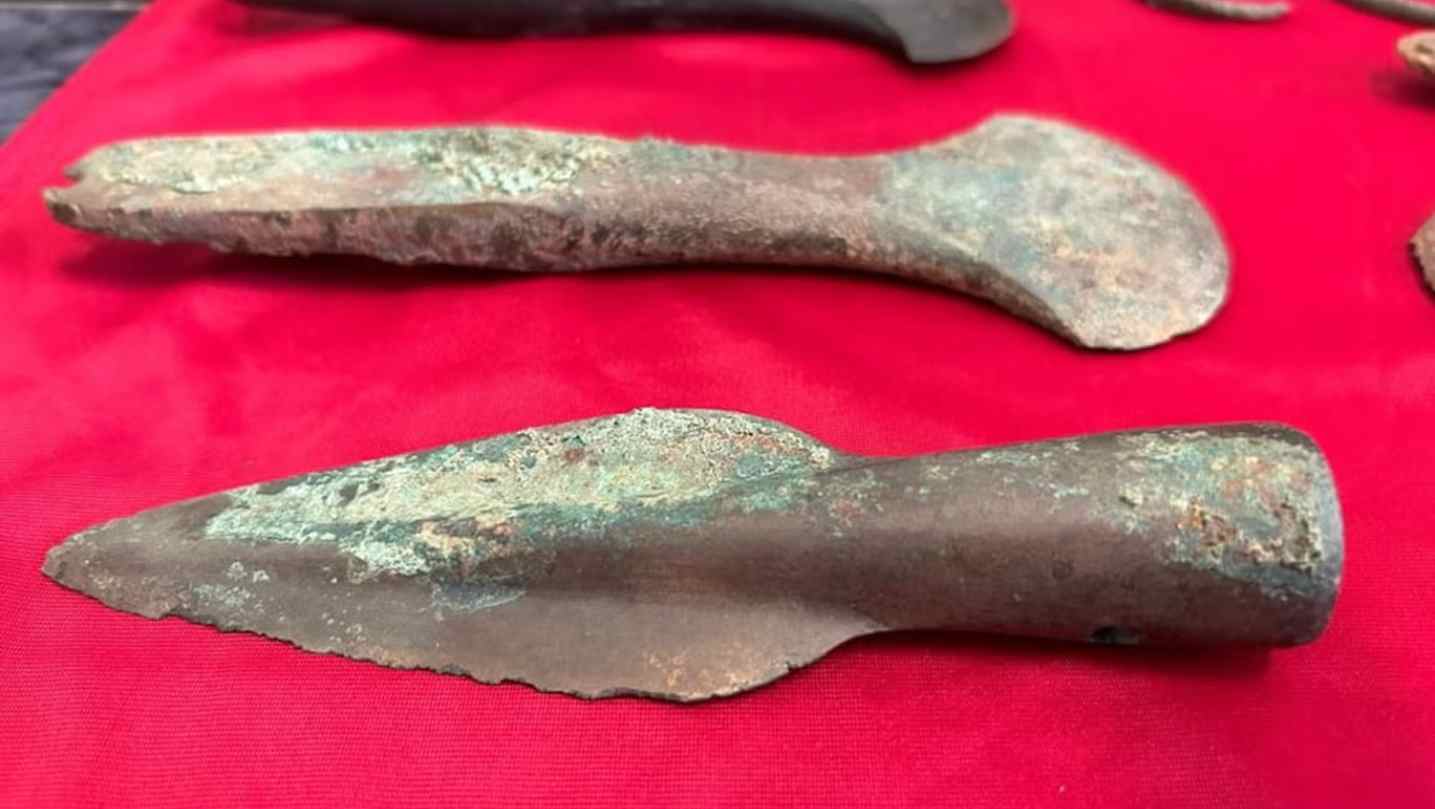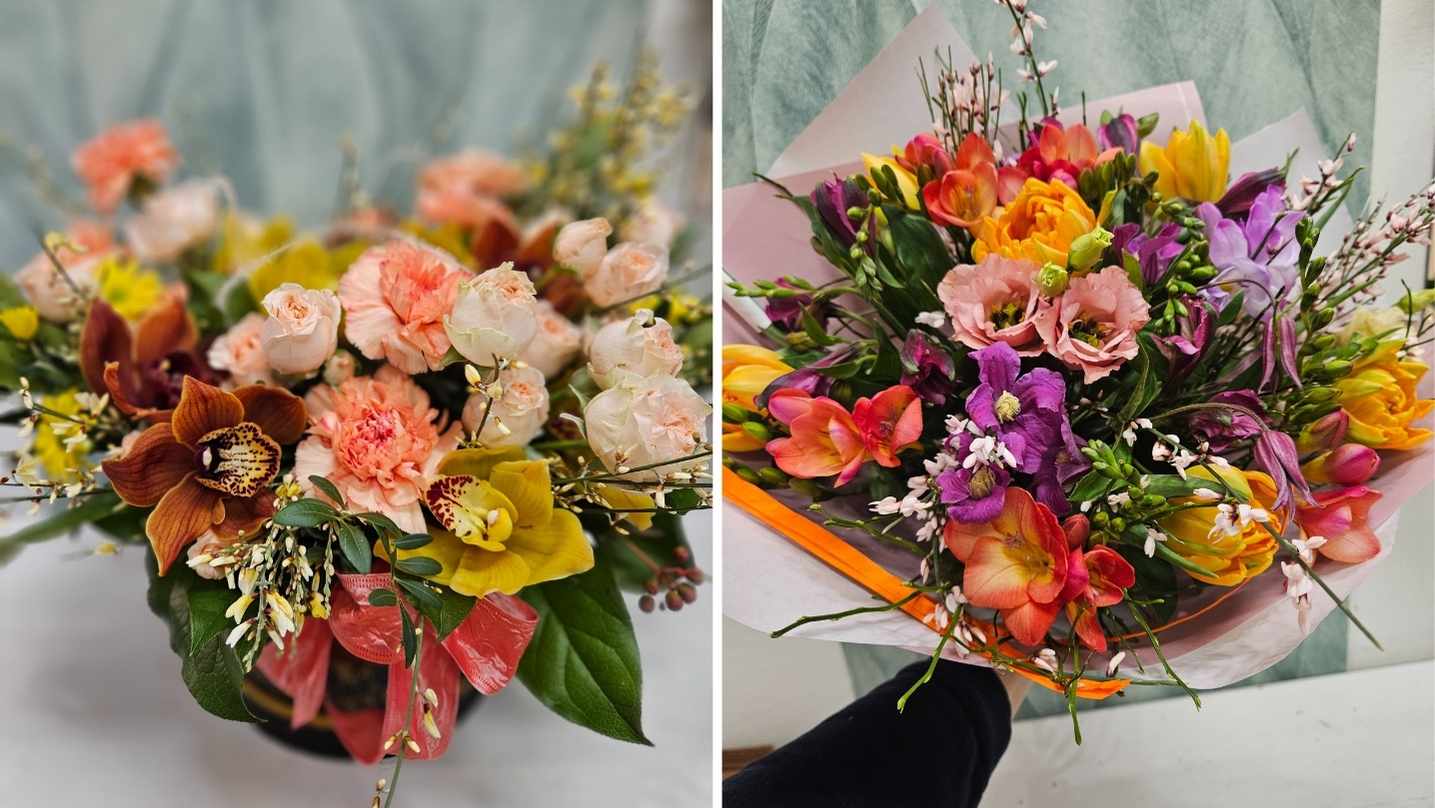By Wednesday, hot temperatures will return, with summer weather peaking over the weekend. Meteorologists predict temperatures reaching up to 33°C, according to the weekly weather forecast.
Today, August 6th is expected to be the coolest day of the week, with daytime highs rarely reaching 25°C.
“It may rain during the day in Moravia and Silesia, and possibly in the Šumava region in the morning and forenoon,” meteorologists reported on Facebook.
“Cloudiness will gradually decrease throughout the day, giving us a fair amount of afternoon sunshine, although temperatures will still not feel very summer-like,” they added.
Nighttime lows will range from 16 to 12°C, while daytime highs will be between 22 and 26°C, around 20°C in the northeast.
On Wednesday, the weather will start clear to partly cloudy, but showers or storms are expected in the evening in Bohemia. Nighttime lows will be between 15 and 11°C, with daytime highs from 27 to 31°C.
“Wednesday will also be sunny, but cloudiness will increase in the evening from the west in Bohemia. Showers or storms could appear, especially in Bohemia, but significant rainfall is not expected,” the weekly forecast adds.
Thursday will see a brief cooling in Bohemia, though temperatures in Moravia will remain above 30°C.
“The mild cooling won’t last long, as temperatures will start to rise again from Friday,” meteorologists predict.
The weekend will be sunny and tropical, with temperatures ranging from 28 to 33°C.
Would you like us to write about your business? Find out more
Archaeologists in the Czech Republic have found a hoard of buried weapons and jewelry dating to around 1600 BC, a rare discovery that could shed more light on life in central Europe during the Bronze Age.
Researchers surveying a site in the town of Budyně nad Ohří stumbled upon bronze artifacts, including eight axes and pieces of jewelry, from over 3,600 years ago.
The site, 40km northwest of Prague, was first found a year ago by an archaeologist using a metal detector.
A series of excavations since have unearthed eight arm rings, as many axes, two pins, and one spearhead, all dating to the Bronze Age.
Researchers suspect the artifacts were part of a collection that was purposefully buried underground. While researchers are still not quite sure why the objects were hidden in that place, they have three theories.

Researchers have analyzed the artifacts uncovered over the past year and are certain about their age but suspect one of the axes is much older.
During the Bronze Age, which spanned from 3,300 BC to 1,200 BC, people in Europe made the shift from fashioning tools from stones to using bronze, an alloy that was made by melting and mixing tin and copper.
Around 1,200 BC, archaeological evidence suggests, most of the Bronze Age societies collapsed and were abandoned, likely due to conflicts.
Towards the end of the Bronze Age, entire kingdoms, empires, cities and societies collapsed within just a few decades throughout Europe, Asia and Africa.
Although similar hoards of Bronze Age artifacts have been discovered elsewhere, researchers described the latest find in the Czech Republic as “still quite rare.”
The bracelets discovered at the site were worn as forearm ornaments just as they would be today while the pins were likely used to fasten clothing or to style women’s hair, scientists said.
The artifacts would go on display at the Podřipské Museum in Roudnice nad Labem in the near future.
Would you like us to write about your business? Find out more
Prague will, once again, have a direct connection with China.
Effective 24 June, Hainan Airlines is resuming its direct route to Beijing, which the carrier will operate three times a week on Mondays, Wednesdays, and Fridays.
Flights will be served by an Airbus A330.
Praha opět získá přímé spojení s Čínou
! @HainanAirlines od 24. června obnoví svoji přímou linku do Pekingu, kterou budou provozovat třikrát týdně vždy v pondělí, ve středu a v pátek. Lety do čínské metropole bude obsluhovat Airbus A330 s kapacitou pro 292 cestujících
. pic.twitter.com/vDDSnBqPWx
— Prague Airport (@PragueAirport) April 3, 2024
Flights will depart Beijing at 2:30 am, arriving in Prague at 6:45 am. The return flights will leave Prague at 2:00 pm, touching down in Beijing at 5:20 am the following day.
Ticket sales are yet to be announced.
Hainan Airlines holds the distinction of being the first Chinese carrier to connect Prague with Beijing. The inaugural flight took place in September 2015.
Then-President Miloš Zeman hailed the route’s launch as a significant achievement of Czech-Chinese relations. Initially, due to passenger loads, the Airbus A330-300 deployed on the route continued onwards to Belgrade after serving Prague for three years.
Prior to the pandemic, other Chinese airlines operating flights from Prague to China included Sichuan Airlines (Chengdu) and China Eastern Airlines (Shanghai and Xi’an).
Would you like us to write about your business? Find out more
The Czech Hydrometeorological Institute (ČHMÚ) has declared a smog situation in several regions due to high concentrations of dust particles linked to Saharan sand.
The affected areas include the Moravian-Silesian Region, South Bohemia, Brno, and Vysočina.
Authorities advise residents to limit strenuous outdoor activity due to potential breathing difficulties caused by the dust.
The Czech Hydro-Meteorological Institute said the sand, which increases the concentration of dust particles in the air, may be present in Czechia until Monday.
As of Sunday morning, data from the institute’s website revealed dust levels exceeding 100 micrograms per cubic meter in several locations across the country.
ČHMÚ declares a smog situation when at least half of a region’s monitoring stations record a 12-hour average PM10 concentration exceeding 100 micrograms per cubic meter, with no improvement expected within the next 24 hours.
“The situation’s development remains unclear,” ČHMÚ stated on Saturday, acknowledging the unusual nature of the event.
ČHMÚ urges residents, particularly older adults, young children, and those with respiratory illnesses or heart conditions, to avoid strenuous outdoor activity during the smog event.
Would you like us to write about your business? Find out more
The Czech Republic will have a brand-new free-to-air TV channel next month as Warner TV launches on 2 April.
It will be managed as part of the local Czech linear Warner Bros. Discovery portfolio.
Vaclav Palecek, Distribution and Business Development at Warner Bros. Discovery in the Czech Republic & Slovakia, said:
“Starting April, Czech viewers will be able to enjoy the wide range of content, including movies and series, on Warner TV. We are close to launching our first free-to-air channel in the market and we will bring a great content library on-air for all the viewers, from classical films to popular series.”
Warner TV’s television signal will be distributed by Ceské Radiokomunikace.
In the Czech Republic, Warner Bros. Discovery operates 18 pay-TV linear channels (Discovery, Eurosport 1, Eurosport 2, Eurosport 4K, HGTV, TLC, Travel Channel, Investigation Discovery, Cartoon Network, Cartoonito, CNN, Food Network, Animal Planet, HBO & HBO 2 & HBO 3, Cinemax & Cinemax 2) and the HBO Max streaming platform.
Last March, Radiokomunikace started broadcasting the AMC channel and later the domestic channel A11. In December they launched Hit TV and Sporty TV.
Currently, České Radiokomunikace operates over three dozen TV channels.
Prague City Council recently unveiled a CZK 22 million investment in targeted marketing campaigns aimed at boosting inbound tourism.
This strategic initiative seeks to attract both international and domestic visitors, diversifying the city’s tourist landscape.
A significant portion of the budget, CZK 2 million each, is dedicated to commemorating two cultural milestones: the 100th anniversary of Franz Kafka’s death and the 200th anniversary of Bedřich Smetana’s birth.
Jiří Pospíšil, Prague’s Deputy Mayor for Culture, emphasized the success of established campaigns like “At Home in Prague” and “Enjoy Respect Prague.”
The former targets domestic tourism, encouraging Czechs to explore their own capital, while the latter promotes responsible visitor behavior, ensuring a positive experience for both tourists and residents.
Among other things, the capital continues to support congress and event tourism in the metropolis. Prague is planning to launch a contract for the promotion of congress tourism between July 2024 and June 2027.
“Prague collected almost CZK 800 million in overnight stay fees in 2023. Of this amount, the memorandum with the Association of Hotels and Restaurants committed to invest up to CZK 130 million back into the development of tourism in Prague. I am very pleased that we have approved part of this investment of CZK 22 million to provide marketing campaigns to promote inbound tourism,” added Pospíšil.
The winning company will provide services related to the promotion and development of congress tourism in Prague, in particular, the provision of candidacy campaigns, the acquisition of new applicants for congresses and other similar events in the metropolis.
Approximately 100 people congregated outside the Israeli embassy in Prague yesterday evening (February 14th), voicing their opposition to the Israeli offensive against Palestinians.
The demonstration, organized by the “Not in Our Name!” initiative, saw protesters carrying Palestinian flags and chanting slogans like “Free Palestine” and “Hands off Rafah.”
During the rally, a concerning incident unfolded as a participant doused himself with flammable liquid and attempted self-immolation.
Fortunately, swift intervention by vigilant police officers prevented him from succeeding.
“Police officers supervising the announced rally in Prague 6 swiftly intervened when a participant poured flammable liquid on himself and attempted to set himself alight,” authorities stated on the X network.
“The Department of Extremism and Terrorism’s criminal investigators will handle the incident, and the individual was transferred to medical professionals for treatment.”
Several speakers addressed the gathering, emphasizing the plight of Gaza civilians caught in the crossfire of the Israeli response to Hamas attacks in October 2023.
Particular attention was drawn to the dire situation in Rafah, the primary refuge for those fleeing war-torn areas. The speakers condemned Israel’s actions, labeling them as “genocide.”
Across the street, a smaller group of pro-Israel supporters gathered peacefully. No altercations between the opposing groups were reported, with police maintaining a watchful presence throughout the demonstration.
The Israeli offensive, launched in response to Hamas attacks that claimed 1,200 lives and abducted over 200 individuals according to Israeli authorities, has resulted in heavy civilian casualties in Gaza.
In a planned protest blocking the Prague D1 highway on Monday, February 19th, Czech farmers aim to draw attention to their struggles and demand the Czech government’s withdrawal from the European Union’s Green Deal.
Up to 1,000 tractors and other agricultural equipment are expected to participate, adding their voice to similar actions across Europe amid rising costs and regulations.
While large industry organizations like the Agrarian Chamber and Agricultural Union are holding off on protests until negotiations with the government, organizers Bohumír Dufek and Zdeněk Jandejsek are calling for a strong show of force.
They predict 600 to 1,000 tractors arriving in Prague on Monday, converging from various points like Panenský Týnec, Lovosice, and the D1 on-ramp near Benešov.
The planned action promises significant traffic disruptions. At 6:00 AM, the machinery is expected to block the motorway in both directions for several kilometers, impacting not only the immediate area but also the broader Prague surroundings and potentially access routes from Central Bohemia Region. Public transport may also be affected.
Farmers’ grievances boil down to two main points:
Discontent with the Green Deal: Jandejsek calls the agreement a “harmful policy for people” and argues it disproportionately burdens Czech farmers, already facing the lowest EU subsidies and declining national support. They believe the Green Deal undermines self-sufficiency in basic commodities and demands greater investment in new farming methods.
Lack of communication: Dufek accuses Minister Výborný and Prime Minister Fiala of ignoring their concerns. While Výborný refutes this, claiming a recent pre-arranged meeting, the organizers maintain their demand for dialogue and action.
They point to ongoing protests in Germany and France as potential precursors to larger demonstrations if talks with the Czech government do not yield results. Dufek further claims a decision on future protest forms will be made on Monday evening.
Nestled behind the bustling commotion of Palladium, are a few side streets that ooze with Prague’s distinct culture as a city, where each store holds its own specialty and a new way for customers to connect with the city.
In these side streets, you’ll find MyFlorist, a unique floral boutique that stands out not only for its stylish arrangements but also for the personal touch of its owner, Katka.
MyFlorist caters to a diverse clientele, thanks to Katka’s fluency in English. In a city teeming with expatriates and tourists, this skill is invaluable.
“Speaking English is very handy when it comes to dealing with customers from various backgrounds, many of them mention that when explaining their ideas, they often encounter a language barrier,” Katka points out.
Originally from Slovakia, Katka moved to Prague 22 years ago to work in the business aviation industry. However, a deep-seated passion for floristry, inspired by her father’s love for gardening, led her to change her path after his passing.
She created MyFlorist, blending her skills in VIP customer service, from her previous career, with her love for flowers.

The commitment to quality at MyFlorist is paramount. “Keeping huge stocks of flowers each day is not crucial, I prefer quality to quantity. Going shopping for the orders I get the previous day ensures that the flowers are always fresh”, she says. “Customers often praise how long they last, it is my way of spoiling them”. This is a cornerstone of MyFlorist’s reputation, proven by many positive reviews.
An integral part of the flower shop is the e-shop – myflorist.cz offering delivery around Prague, and when available, Katka will take the opportunity to deliver the flowers herself, adding a personal touch to each delivery.
This service is particularly valued by her international customers, who make up around eighty percent of her orders. Katka likes to stay in touch with her local and international customers, keeping them updated and involved throughout the order process and customization, which builds trust and a relationship. The shop’s most popular option, the ‘Florist’s Choice’, allows customers to leave the selection to Katka’s expertise.

“People often opt for the Florist’s Choice, trusting me to create something unique, usually with seasonal flowers,” she notes.
Moreover, MyFlorist goes beyond traditional retail, offering bi-lingual workshops for companies and groups interested in learning about floristry.
These workshops provide hands-on experiences in bouquet preparation and flower care, making them popular for team-building events and group activities.

MyFlorist in Prague is more than just a flower shop; it’s a manifestation of Katka’s passion and commitment to her craft. Her personal touch, the popularity of MyFlorist among foreigners, and the unique workshops offered, all make it a wonderful gem in Prague’s florist industry.
With Valentine’s Day lurking around the corner, start the 2024 season of love with a new florist, and why not consider MyFlorist when thinking about getting that gift for someone special!
There has been a notable increase in egg prices across Czech supermarkets. This price surge comes as a surprise, particularly in light of the recent three-percentage-point reduction in the value-added tax (VAT) on food items.
Throughout December, supermarkets lured customers with discounted egg prices. However, these same eggs are now being sold at a higher cost per piece.
The earlier Christmas promotions and current seasonal factors, including concerns about bird flu, are likely contributing to this unexpected price hike.
According to the Czech Statistical Office, the average price of eggs in stores at the end of the previous year was 3.70 crowns each. Stores like Albert offered promotions, such as a pack of ten eggs for 29.90 CZK, a deal echoed by other chains.
Following the New Year, the pricing has seen an increase, with Albert pricing the package at 48.60 CZK, Lidl at 43.50 CZK, and Penny at 46.65 CZK. At Billa, a pack of thirty eggs equates to a single egg price of 4.66 CZK.
It’s not only consumers who are closely monitoring these prices; both the Government and the Czech National Bank had pledged a reduction in high inflation.
However, the repricing efforts in January, along with changes in tax rates and energy prices, could potentially impact these goals.
It is evident that food prices have not experienced a significant decrease, and the final impact will only be discerned once statisticians present their findings next month.
After a successful four-year run, Czech carrier RegioJet has made the strategic decision to discontinue its seasonal Prague-Croatia railway service.
Instead, the company is steering its focus to Ukraine, according to statements from the company’s director, Radim Jančura, to Zdopravy.cz.
However, RegioJet is gearing up to enhance its bus services to Croatia, aiming to offset the void left by the canceled trains. Buses from Prague to Split will be in operation daily throughout the summer of 2024.
The transformation began in the summer of 2023, as the company reduced the number of trains to Croatia, reallocating resources to the route from Prague to the Ukrainian border. Jančura stated, “We are now prioritizing year-round connections to Ukraine.”
The Czech private operator aims to start service to Ukraine in January 2024 with an overnight flight from Prague to Chop, operating through the Cerná nad Tisou border crossing in Slovakia.
The new route will utilize a 37-kilometer stretch of standard gauge track from the border to Chop and onward to Mukachevo in Ukraine.
Departing from Prague Main Station at 21:38, the trains will reach Chop at 10:35, with the return journey departing Chop at 17:30 and arriving in Prague at 05:07.
Given that RegioJet lacks a license to operate in Ukraine, the new flight will be a collaborative effort with Ukrainian Railways (Ukrzaliznytsia).
RegioJet introduced a direct train from Prague to Croatia in the summer of 2020, during severe air travel restrictions due to the coronavirus epidemic.
The affordability of tickets and high demand for the destination made this mode of travel popular among passengers.
In the UK and US, people attempt a month without drinking alcohol under the banner of Dry January, but in Czechia, February is the nationally recognized month for abstaining.
In its 2024 edition, the Dry February campaign (Suchej únor) extends its mission beyond alcohol abstinence, urging participants to embrace a healthier lifestyle.
The goal is ambitious—to impact over one million individuals, building on the 14 percent of the population that engaged last year.
For those backing the cause financially, benefits include online workout sessions and monthly memberships to weight-loss apps, to complimentary rides on shared bikes.
“If we take data from the World Health Organisation, we have long been ranked among the top three global consumers. Some 14 litres of pure alcohol are consumed per person per year in this country, which is an enormous number. And that’s after deducting tourist consumption,” says Petr Freimann of the non-profit organisation behind the campaign.
Looking back at last year’s campaign, expert guarantor Josef Petr said, “We successfully got thousands of people to rethink their relationship with alcohol. More than half of them continued to drink less even months after the Dry February ended.”
“We have tens of hundreds of stories from people telling us how it helped them, how it made them become aware of their relationship to alcohol, how in some way or another they started to do things differently. This is of course something that confirms to us that the campaign is necessary and that it makes sense to people,” added
However, beer consumption dropped to 135.4 liters per person, which is 4.5 liters less than in 2020.
The Ministry of Health reports that 1.5 million Czechs are at risk due to harmful alcohol consumption, leading to health, social, and economic issues totaling CZK 56 billion each year, according to earlier Ministry reports.

